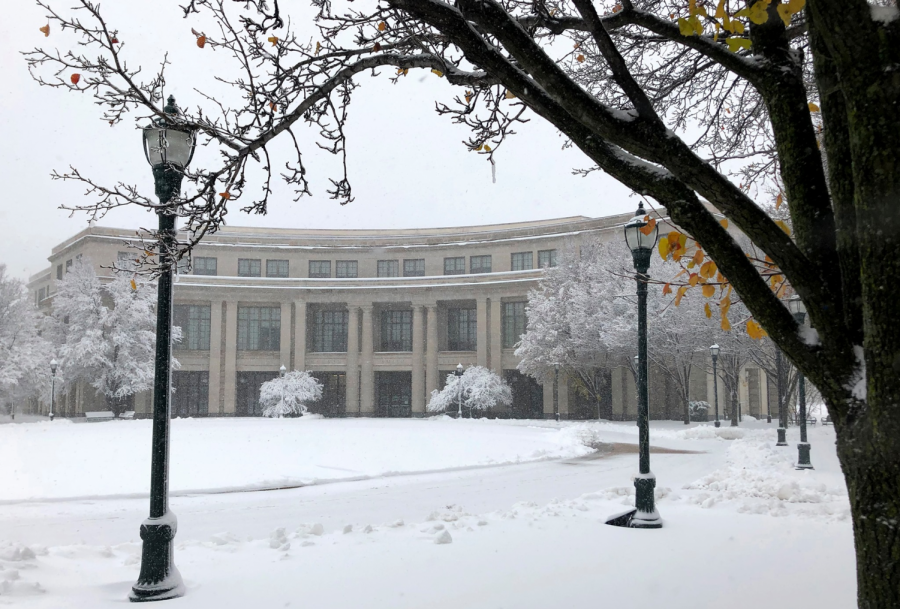Richards: The tale of snow days
CWRU has rarely experienced snow days, and the incidence of these across educational levels is likely to continue to decrease with the accessibility of remote learning.
In our middle and high school days, nothing beat the feeling of going to sleep knowing there was a snowstorm brewing overnight with the chance of school being cancelled the next morning—at least if you lived in an area capable of producing enough snow. This was a staple childhood memory of mine—waking up to see my school district’s name scroll across the bottom of the local news station on the TV next to the greatest word in the entire world in that moment: “CLOSED.” It was much less exciting seeing “Two-Hour Delay,” and even worse when the neighboring school districts were closed on top of that. Oh, to be back in the time when that was all I could get mad about!
Of course, discovering that it was, in fact, a snow day would just be followed by a few more hours of sleep and then some of the laziest hours I’ve ever had. Sometimes I’d go out and play in the snow with friends or try to make an igloo. If I were any good at that, maybe I would have been on a path towards civil engineering today, but watching my ice bricks repeatedly crumble tarnished that career path early on.
You could make the best memories out of snow days. They have evolved in meaning over time, though. College snow days meant finally meeting your sleep goal or getting caught up on classwork. Over winter break, it meant no work. Now, wait, what does it mean now?
The pandemic has brought a new light to snow days. Most schools over the course of the last year transitioned to remote learning, and many organizations and corporate offices have also transitioned to remote work. They have relied closely on services like Zoom, Cisco Webex and Microsoft Teams to keep everything running as smoothly as possible, while also staying as safe as possible.
This seems to have had the side effect of making snow days obsolete. Some schools have transitioned into hybrid learning, with sophisticated schedules allowing students to come in a few days out of the week while staying online the rest of the days. With these remote learning technologies, there’s no reason to stop school or work activities now if the weather conditions are too dangerous. It’s just another remote learning day on the schedule.
During a winter storm warning here at CWRU a few weeks back, temperamental weather conditions caused a shutdown of on-campus classes and work. Classes simply transitioned to remote and continued as normal. For me, all of my classes are online, so I had no change to my schedule. Friends from back home with similar weather conditions also transitioned to remote work days for the duration of the storm. No snow days were to be had.
As for the future of snow days, we just can’t know. Now that schools have tested the ability to teach remotely, many will offer it as an option to supplement learning on days when it isn’t feasible for the students to come into class. It’s a sign of the changing times as a result of the COVID-19 pandemic, and maybe in fifty years, snow days will be looked back on as a relic—similar to how grandparents describe walking to school through blizzards and thunderstorms for 15 miles “back in the day.” Maybe for this generation, our “back in the day” story we tell our grandchildren will be the tale of snow days.

Jason Richards is a fourth-year computer science major and English minor. He enjoys programming, cooking and spending his money at Chipotle.


